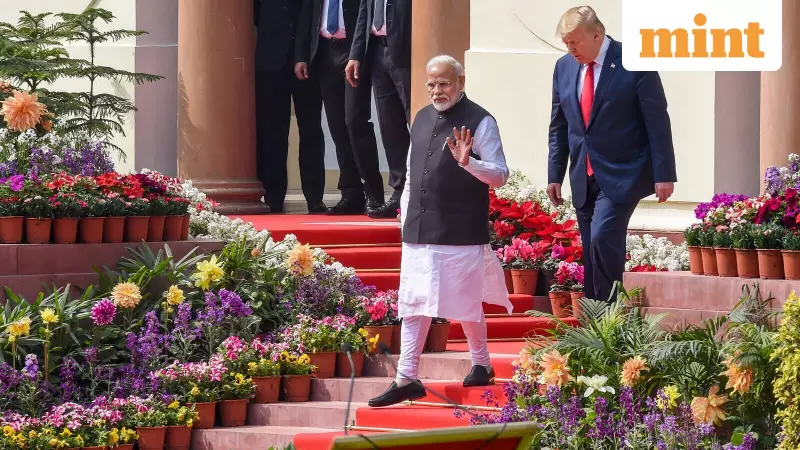
Optimism surrounding the proposed India-US trade agreement has intensified significantly following encouraging remarks from Union Commerce and Industry Minister Piyush Goyal. Last week, the minister sparked market excitement by hinting at positive developments, stating, "You will hear good news" regarding the ongoing negotiations.
Massive Trade Expansion Target
The ambitious trade talks between the world's largest democracies aim to more than double bilateral trade to $500 billion by 2030, representing a substantial leap from the current trade volume of $191 billion. This potential agreement has prompted savvy investors to position their portfolios strategically in anticipation of the deal's finalization.
Sectors Poised for Maximum Benefit
Stock market analysts are directing investor attention toward specific segments with strong export connections to the United States. According to experts, pharmaceuticals, automotive, chemicals, and textiles represent the most promising sectors for value investment opportunities.
Khushi Mistry, Research Analyst at Bonanza, explained the potential market impact: "The India-US trade deal is positioned to deliver a powerful positive catalyst for Indian equities by resolving crucial tariff uncertainties, supporting foreign institutional investor inflows, and boosting overall market sentiment."
She emphasized that export-focused industries would likely experience the initial benefits, with positive effects eventually spreading to broader market indices as foreign investors reenter the Indian market.
Global Supply Chain Shifts Create Opportunities
The trade agreement assumes greater significance as the United States continues diversifying its supply chains away from China. Indian manufacturers in electronics, auto components, and automotive brands competing internationally stand to gain substantially from this geopolitical realignment.
Ross Maxwell, Global Strategy Lead at VT Markets, highlighted the potential tariff relief: "The imminent trade agreement between the US and India could generate significant tailwinds for Indian equity markets, particularly if tariffs see substantial reductions from current levels."
Maxwell noted that while markets may have partially anticipated the deal's effects, actual tariff reductions on Indian exports would directly boost export growth and enhance corporate profit margins.
Broader Market Implications
The VT Markets expert identified specific areas that could drive performance in key benchmark indices like Nifty 50 and Bank Nifty. "Export-linked companies, large private banks, and manufacturing firms with US exposure will likely attract significant attention from Dalal Street investors," Maxwell stated.
He specifically mentioned that manufacturing sectors including textiles, gems and jewellery, along with IT, technology, and electronics manufacturing would all stand to benefit from the trade agreement.
Pranay Aggarwal, Director & CEO of Stoxkart, provided additional insight: "A probable rollback of duties on select agricultural and manufactured goods should strengthen earnings visibility for export-oriented sectors, especially agri-exports, processed foods, and niche manufacturing."
Aggarwal anticipates a mild market re-rating as investors shift toward cyclical stocks and export beneficiaries, though he noted that sectors like textiles, garments, and gems might see only incremental benefits until a comprehensive trade agreement materializes.
Enhanced Investor Confidence and Currency Impact
The trade deal is expected to significantly improve investor confidence in Indian markets, potentially strengthening the Indian rupee and supporting renewed foreign investment flows. The combination of tariff clarity, improved export prospects, and steady domestic demand creates a constructive environment for near-term market performance.
As negotiations progress toward what appears to be a favorable outcome, market participants are advised to monitor developments closely and consider strategic positions in sectors with strong export linkages to the United States.





